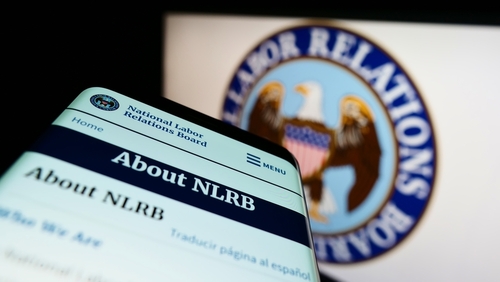A Framework for Reparations: Scholars worked years to develop detailed, 'feasible' plan

"The Black Reparations Project: A Handbook for Racial Justice" draws on contributors’ expertise in law, economics, history, public health, education and other disciplines, laying out a detailed plan for who should get reparations and how, including draft legislation. Image courtesy of the University of California Press.
For decades, politicians, scholars and activists have debated whether there should be reparations for slavery, and if so, what form that compensation would take. In The Black Reparations Project: A Handbook for Racial Justice, authors William A. Darity Jr., A. Kirsten Mullen and Lucas Hubbard work to answer all questions and move the reparations discussion from theory to action, tapping an interdisciplinary team to create a framework to advance the cause.
The book draws on contributors’ expertise in law, economics, history, public health, education and other disciplines, laying out a detailed plan for who should get reparations and how, including draft legislation.
Darity, a professor and the director of the Samuel DuBois Cook Center on Social Equity at Duke University who created a reparations planning committee years ago, said compensation would help roll back the continued vestiges of chattel slavery, such as the country’s racial wealth gap.
According to Darity, Black Americans make up 13% of the national population but have only 3% of national wealth. This disparity can be traced to systemic government policies that denied economic opportunity to Black people while affording opportunities to many white Americans, according to Darity.
In an interview with the ABA Journal, two of the book’s authors acknowledged that the country may be in a moment in which the odds that reparations will happen right now are low, but they say it’s important to keep the struggle moving forward.
First, how do you define reparations, and why do you feel that it’s owed to African Americans?
A. Kirsten Mullen: In the previous book on African American reparations that Sandy Darity (William Darity Jr.) and I wrote, From Here to Equality: Reparations for Black Americans in the Twenty-First Century, we defined reparations as a program of acknowledgement, redress and closure for a grievous injustice. Historically, a standard form of restitution for the victimized community has been monetary payments. Examples include the German government’s payments to victims of the Holocaust and the U.S. governments payments to Japanese Americans who were subjected to mass incarceration during World War II. Also, the U.S. government paid families that lost loved ones during the 9/11 terrorist attacks and Americans held hostage in Iran in 1979 [to] 1980. In the latter case, the former hostages are to be paid $10,000 per day of captivity. Since they typically were held for 440 days, the payments will come to $4.4 million per recipient. Furthermore, in neither of these cases was the United States government the culpable party for the harm; nevertheless, it’s paid or is paying restitution.
Lucas Hubbard: I also must add, as a point of clarification, the case for reparations developed in the book is not limited to the harms of slavery. In fact, a key element is the failure to provide restitution to the freedmen after slavery ended in the form of 40 acres land allotments they were promised and denied. At about the same time, the federal government gave 160 acres land patents to 1.5 million white families in the western territories under the Homestead Act of 1862, and Trina Williams Shanks at the University of Michigan has estimated there are 45 million living white Americans who continue to benefit from the Homestead Act land distribution.
In The Black Reparations Project, the case is made for reparations specifically for African Americans who can trace their lineage back to slavery in America. You estimate that America owes Black Americans a huge sum—how much did you come up with?
Lucas Hubbard: The estimate presented in The Black Reparations Project of the amount needed to eliminate America’s racial wealth gap is at least $14.7 trillion or about $357,000 per eligible Black American. That corresponds to close to $1 million per Black household, a sum of money that would be genuinely transformative in terms of opportunity and economic security.
Early in the book, you outline what you call the four pillars of true reparations. Can you explain?
Lucas Hubbard: Certainly. In the first chapter, Sandy and Kirsten delineate the four pillars as follows:
- Eligible recipients must be Black Americans who have ancestors who were enslaved in the United States.
- The reparations plan must be designed, at minimum, to eliminate the Black-white chasm in wealth.
- The vast majority of the reparations fund should take the form of direct payments to eligible recipients.
- The federal government must finance the reparations project.
We expand on the logic of these pillars throughout the book. But in short, the first pillar is essential for defining this particular reparations claim by this group against this government; and the second, third and fourth pillars are essential for ensuring the redress phase of reparations is complete.
In the book, you cited Sen. Mitch McConnell as saying he was against reparations because they’d be too hard to administer. How do you propose that the government would actually go about giving reparations?
Lucas Hubbard: One of the key accomplishments of The Black Reparations Project is demonstration that Black reparations are eminently feasible to administer. The book’s contributors emphasize reparations should prioritize direct payments to eligible recipients. These could be direct deposits into their personal accounts or could take the form of less liquid assets, like trust accounts or annuities. What is critical is recipients are able to decide how they want to use the payments. This is how reparations have been paid to other victimized communities, and there is no reason this plan should be executed any differently.
Write a letter to the editor, share a story tip or update, or report an error.



